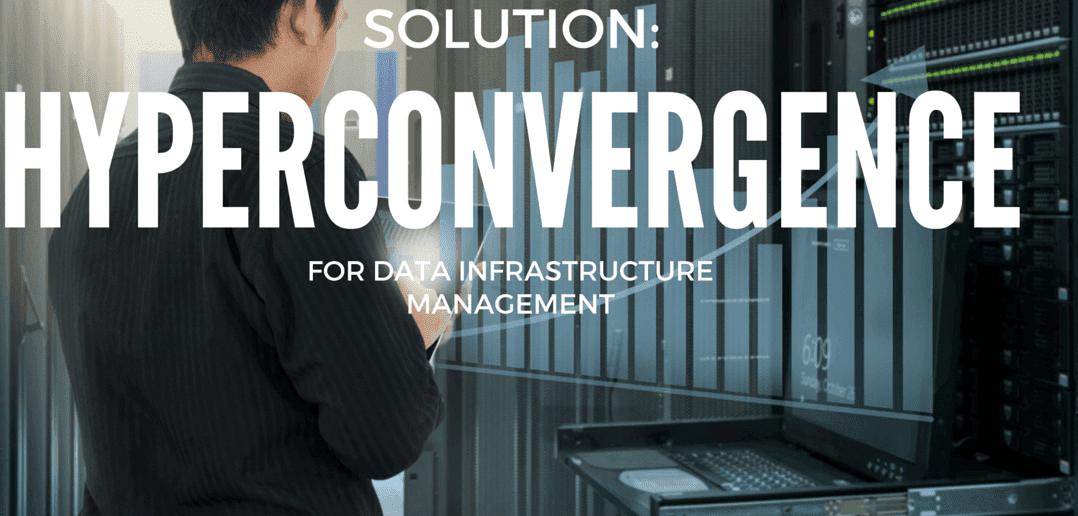
Why the shift to hyper-convergence?
In the seemingly endless struggle to eliminate datacenter complexity, businesses are moving past converged infrastructures right into systems embodying hyper-convergence. But what is hyper-convergence, and why are businesses so bullish about it?
What’s the definition of hyper-convergence?
 Hyper-convergence is an architecture where the typically independent data center components of storage, computing, and virtualization combine into one solution. A Hyper-converged Infrastructure (HCI) solution usually comes in the form of an appliance but can also be a piece of hardware-agnostic software. Multiple HCI nodes can be added together to scale out the infrastructure.
Hyper-convergence is an architecture where the typically independent data center components of storage, computing, and virtualization combine into one solution. A Hyper-converged Infrastructure (HCI) solution usually comes in the form of an appliance but can also be a piece of hardware-agnostic software. Multiple HCI nodes can be added together to scale out the infrastructure.
How Hyper-Convergence Works
The main goal of hyper-convergence is to reduce complexity in the datacenter. So instead of deploying separate teams or individuals to manage each component, such as storage systems, servers/networking devices, and hypervisors, companies can assign that job to a single team or person.
Instead of using specialized hardware, hyper-convergence allows all crucial data center operations to operate on a closely integrated software layer. Three software elements make up hyper-converged platforms: administration, compute virtualization, and storage virtualization. The underlying resources are abstracted and pooled by the virtualization software, which then dynamically distributes them to programs operating in Virtual Machines (VMs) or containers.
Why converged solutions don’t cut it
Hyper-convergence isn’t the first attempt to simplify data center management by converging storage, computing/networking, and virtualization systems into one. Back in the late-2000s to early the 2010s, big players in the IT industry like Cisco, EMC, VMware, and NetApp came up with what is now known as converged solutions.
One of the solutions introduced during that time was Vblock, a product of VCE (Virtual Computing Environment), which in turn was a joint venture of Cisco, EMC, and VMware. Cisco provided the servers and networking hardware, EMC the storage, and VMware the virtualization component. Another solution was NetApp’s FlexPod, which combined NetApp storage with Cisco servers/networking and VMware (vSphere) or Microsoft (Hyper-V) hypervisors.
The problem with these converged solutions was that, although packaged as a single product, their underlying components still often had to be treated independently. For instance, in the case of FlexPod, storage was usually administered via NetApp’s OnCommand, networking and computing through Cisco’s UCS Manager and hypervisors via VMware vCenter.
Secondly, converged solutions are considered too complicated. In one particular review on TrustRadius.com, one customer described Vblock as “not simple to manage” and whose documentation was “too complicated to understand”.
Hyper-convergence vs. HCIs
The limitations of hyper-convergence stated above are the significant reasons why businesses prefer HCIs. The real, all-in-one nature of HCI solutions, which all support single-pane-of-glass administration, make them far more capable of simplifying data center management.
What type of workloads use HCI?
Today’s HCI solutions are now suitable for a wide range of workloads, including databases, enterprise applications, private clouds, and many others. However, they were initially designed and are still perfect for Virtual Desktop Infrastructure (VDI). Hyperconvergence makes it easy for organizations to scale their infrastructure to accommodate more VDI users. This particular need is easily met by adding more nodes.
Hyper-convergence also presents the most straightforward solution to one of the most common VDI problems — running out of storage space too quickly. Compared to traditional storage solutions, HCI solutions are much simpler and more affordable to scale. Again, if your VDI environment has run out of storage, you add more HCI nodes.
How to maximize hyper-convergence benefits in VDI environments
The best deployment of hyper-converged infrastructure is alongside a VDI solution whose characteristics complement or reinforce hyper-convergence benefits. For instance, you wouldn’t want to deploy it with a VDI solution that’s too complicated. If you do, you might be forced to hire expensive specialists or consultants, even if the HCI solution only required a typical IT administrator. Similarly, you wouldn’t want it deployed alongside an unreasonably priced VDI solution that would negate whatever cost savings gained from the hyper-converged infrastructure.
Parallels RAS – Your complete hyper-convergence solution!
One VDI solution that strongly complements HCI is Parallels Remote Application Server (RAS), a virtualization solution known to be extremely straightforward to manage and easy on the budget.
Parallels RAS supports HCI deployments with several hyper-converged solutions, including Nutanix, HPE Hyper Converged 250/380, SKALA-R, and Scale Computing HC3.
Download your 30-day evaluation period of Parallels RAS today and witness its swiftness and flexibility on your own!
